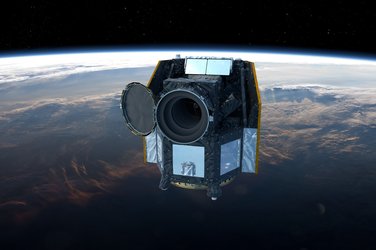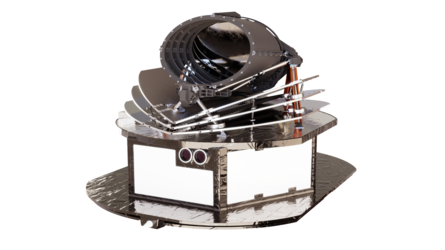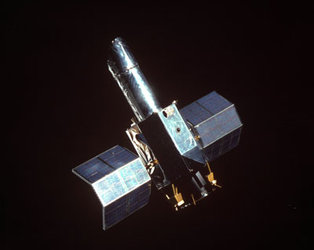Accept all cookies Accept only essential cookies See our Cookie Notice

About ESA
The European Space Agency (ESA) is Europe’s gateway to space. Its mission is to shape the development of Europe’s space capability and ensure that investment in space continues to deliver benefits to the citizens of Europe and the world.
Highlights
ESA - United space in Europe
This is ESA ESA facts Member States & Cooperating States Funding Director General Top management For Member State Delegations European vision European Space Policy ESA & EU Space Councils Responsibility & Sustainability Annual Report Calendar of meetings Corporate newsEstablishments & sites
ESA Headquarters ESA ESTEC ESA ESOC ESA ESRIN ESA EAC ESA ESAC Europe's Spaceport ESA ESEC ESA ECSAT Brussels Office Washington OfficeWorking with ESA
Business with ESA ESA Commercialisation Gateway Law at ESA Careers Cyber resilience at ESA IT at ESA Newsroom Partnerships Merchandising Licence Education Open Space Innovation Platform Integrity and Reporting Administrative Tribunal Health and SafetyMore about ESA
History ESA Historical Archives Exhibitions Publications Art & Culture ESA Merchandise Kids Diversity ESA Brand Centre ESA ChampionsLatest
Space in Member States
Find out more about space activities in our 23 Member States, and understand how ESA works together with their national agencies, institutions and organisations.
Science & Exploration
Exploring our Solar System and unlocking the secrets of the Universe
Go to topicAstronauts
Missions
Juice Euclid Webb Solar Orbiter BepiColombo Gaia ExoMars Cheops Exoplanet missions More missionsActivities
International Space Station Orion service module Gateway Concordia Caves & Pangaea BenefitsLatest
Space Safety
Protecting life and infrastructure on Earth and in orbit
Go to topicAsteroids
Asteroids and Planetary Defence Asteroid danger explained Flyeye telescope: asteroid detection Hera mission: asteroid deflection Near-Earth Object Coordination CentreSpace junk
About space debris Space debris by the numbers Space Environment Report In space refuelling, refurbishing and removingSafety from space
Clean Space ecodesign Zero Debris Technologies Space for Earth Supporting Sustainable DevelopmentApplications
Using space to benefit citizens and meet future challenges on Earth
Go to topicObserving the Earth
Observing the Earth Future EO Copernicus Meteorology Space for our climate Satellite missionsCommercialisation
ESA Commercialisation Gateway Open Space Innovation Platform Business Incubation ESA Space SolutionsEnabling & Support
Making space accessible and developing the technologies for the future
Go to topicBuilding missions
Space Engineering and Technology Test centre Laboratories Concurrent Design Facility Preparing for the future Shaping the Future Discovery and Preparation Advanced Concepts TeamSpace transportation
Space Transportation Ariane Vega Space Rider Future space transportation Boost! Europe's Spaceport Launches from Europe's Spaceport from 2012Latest

Artist's impression of the LacunaSat-2B satellite
Thank you for liking
You have already liked this page, you can only like it once!
LacunaSat-2B successfully completes mission and deorbits sustainably
A nanosatellite that supported global connectivity by collecting data from Internet-of-Things (IoT) devices in remote locations, LacunaSat-2B, has successfully completed its three-year mission and deorbited into Earth's atmosphere in late April. During its mission, the satellite demonstrated a commitment to sustainability and provided previously inaccessible data for various sectors, including environmental studies, agriculture and wildlife monitoring.
Collaboration and commitment to sustainability
Launched in March 2021, LacunaSat-2B was made possible through the collaboration of ESA, IoT connectivity provider Lacuna Space, and mission operator Open Cosmos. The CubeSat was developed under an ESA Pioneer Partnership Project and received support from the ESA Advanced Research in Telecommunications Systems (ARTES) and Core Competitiveness programmes. Additionally, the project was co-funded by Lacuna Space, Open Cosmos and the UK Space Agency.
As ESA, Lacuna Space and Open Cosmos share a common commitment to sustainability, and the 'zero debris by 2030' aim, the spacecraft was intentionally launched with a naturally decaying orbit that continuously brought it closer to Earth. This approach was well within ESA’s Space Debris Mitigation requirement of a five-year deorbit, as the satellite completely burned up upon atmospheric re-entry.
Impact and success of LacunaSat-2B
As part of Lacuna's satellite constellation, LacunaSat-2B played a crucial role in enabling a variety of projects aimed at sustainable resource utilisation and securing the planet's future. The satellite helped provide connectivity in remote locations, including those at sea or in hard-to-reach areas such as deserts or rural regions. Additionally, the satellite worked within Lacuna’s constellation to support numerous applications, from tracking elephants in Africa to collecting vital environmental data from isolated regions of South America.
One market that particularly benefits from Lacuna’s constellation is agriculture. Often located in remote areas beyond the reach of terrestrial networks, agricultural operations are seeing increased efficiency in land, water and fertiliser use thanks to Lacuna’s IoT satellite monitoring capabilities. LacunaSat-2B has also contributed to environmental studies, providing weather data, monitoring pollution and supporting carbon sequestration projects by verifying carbon credits.
Lacuna’s ground-breaking IoT payload technology demonstrates how satellites, such as LacunaSat-2B, can receive long-range, low-power signals directly from devices on Earth. The satellite's design prioritised robustness and resilience, ensuring reliability during launch and in-space operation. LacunaSat-2B's success has demonstrated the real-world impact of space technology and helped pave the way for Lacuna's expansion plans, including expanding their constellation.
-
CREDIT
Image credit: Open Cosmos/Lacuna Space -
LICENCE
ESA Standard Licence

Artist's impression of Cheops

Artist's impression of Cheops

Artist's impression of Cheops

Ariel artist impression















 Germany
Germany
 Austria
Austria
 Belgium
Belgium
 Denmark
Denmark
 Spain
Spain
 Estonia
Estonia
 Finland
Finland
 France
France
 Greece
Greece
 Hungary
Hungary
 Ireland
Ireland
 Italy
Italy
 Luxembourg
Luxembourg
 Norway
Norway
 The Netherlands
The Netherlands
 Poland
Poland
 Portugal
Portugal
 Czechia
Czechia
 Romania
Romania
 United Kingdom
United Kingdom
 Slovenia
Slovenia
 Sweden
Sweden
 Switzerland
Switzerland
























